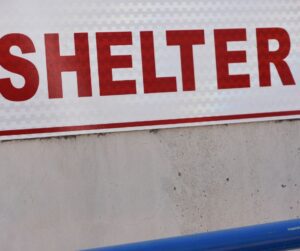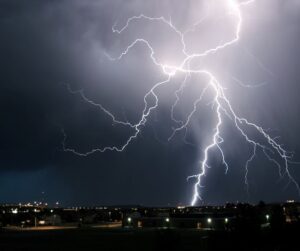Preparing for severe weather, especially when living in a mobile or manufactured home, is crucial to ensure your safety and protect your property.
Mobile homes are more vulnerable to extreme weather conditions like high winds, tornadoes, and heavy rains. Follow this comprehensive guide to make sure you’re ready for whatever Mother Nature throws your way.
Table of Contents
1. Stay Informed and Understand Weather Warnings
Weather Alerts and Warnings
- NOAA Weather Radio: Invest in a battery-powered NOAA (National Oceanic and Atmospheric Administration) weather radio to receive real-time weather updates. These radios work even when cell service is down, making them a reliable source of information. Visit NOAA for more tips for navigating severe weather in a mobile home.
- Weather Apps: Download weather apps like The Weather Channel, AccuWeather, or local news apps to get instant alerts on your smartphone. Set your location and allow notifications for severe weather updates.
- Local News Stations: Tune in to local news stations during storm season to get regular updates and safety instructions.
Understanding Weather Terms
- Watch: Indicates that conditions are favorable for severe weather. It’s time to prepare and monitor the situation.

- Warning: Severe weather is occurring or imminent. Take action immediately.
2. Develop a Comprehensive Emergency Plan
Family Emergency Plan
- Discuss Roles: Assign responsibilities to each family member. For example, one person can be responsible for grabbing the emergency kit, while another ensures pets are secured.
- Practice Evacuation Drills: Regularly practice your evacuation plan so everyone knows exactly what to do in an emergency.
- Emergency Meeting Points: Designate a safe meeting spot near your home and another one outside your neighborhood in case you need to evacuate. Manufactured/Mobile Home safety checklist.
Pet Preparedness
- Pet-Friendly Shelters: Identify pet-friendly shelters in advance. Many shelters do not accept pets, so having a backup plan is crucial.
- Pet Emergency Kit: Include food, water, medications, leashes, and vaccination records for your pets in your emergency kit.
3. Build a Detailed Emergency Kit
An emergency kit is your lifeline during severe weather, especially when living in a mobile or manufactured home, where evacuation or isolation may be necessary. A well-stocked kit can provide essential resources like water, food, first-aid, and tools to help you survive until help arrives or conditions improve. Here’s an expanded list of what you need to include and why each item is important.
Essential Items to Include
1. Water:
- Quantity Needed: The general recommendation is at least one gallon of water per person per day for a minimum of three days. This covers drinking and basic sanitation needs.
- Water Purification Methods:
- Water Purification Tablets: These are lightweight, portable, and can purify up to one liter of water per tablet. They are essential if you run out of bottled water or need to use local sources like rainwater or streams.
- Portable Water Filter: Consider a portable water filter like the LifeStraw or Sawyer Mini Filter, which can filter up to 1,000 gallons of water and remove bacteria, protozoa, and other contaminants.
- Collapsible Water Containers: These are great for storing extra water in a compact form and can be filled up quickly when water is available.
2. Food:
- Non-perishable Items: Aim for high-energy, non-perishable foods that don’t require cooking or refrigeration. Good options include:
- Peanut Butter or Nut Butters: Packed with protein and fats, these are great energy sources and have a long shelf life.
- Trail Mix and Nuts: Full of healthy fats and calories, they provide quick energy.
- Canned Foods: Include canned meats (tuna, chicken), fruits, and vegetables. Don’t forget a manual can opener!
- Granola or Energy Bars: Lightweight and packed with nutrients, these are easy to store and eat on the go.
- Ready-to-Eat Meals (MREs): These are convenient, military-grade meals that include a heat source for warming food without a stove.
3. First-Aid Kit:
- Basic Supplies: Include bandages, adhesive tape, antiseptics (such as hydrogen peroxide or alcohol wipes), gauze pads, scissors, tweezers, and a digital thermometer.
- Medications: Don’t forget a supply of over-the-counter medications such as pain relievers, antihistamines, antacids, and any prescription medications you or your family members need.
- Burn Ointment and Cold Packs: These are crucial for treating burns and injuries, especially if the severe weather leads to fires or accidents.
- First-Aid Manual: A first-aid manual or guidebook is critical in case you face a medical situation and professional help isn’t immediately available. Manuals such as “The American Red Cross First Aid Handbook” are compact and offer practical advice.
4. Tools and Supplies:
- Multipurpose Tool (Swiss Army Knife or Multi-tool): These come equipped with knives, screwdrivers, pliers, and bottle openers, making them useful in a variety of emergency situations.
- Whistle: Use a loud whistle to signal for help if you’re trapped or lost. Whistles are more efficient than shouting and can travel longer distances.
- Duct Tape: Extremely versatile, duct tape can be used for quick repairs, sealing windows, waterproofing items, and even securing broken furniture.
- Heavy-Duty Work Gloves: Essential for handling debris, cleaning up after a storm, or even securing shelter materials like tarps.
- Plastic Sheeting: This can be used to create temporary shelters, cover damaged parts of your home, or seal windows during storms. Paired with duct tape, it can help prevent water damage inside your home.
- Blankets and Warm Clothing: In case of power outages during cold weather, include thermal blankets, fleece blankets, or sleeping bags. These should be lightweight but designed to retain heat in extreme temperatures.
Additional Considerations
1. Sanitation Supplies:
- Personal Sanitation Items: Include moist towelettes, hand sanitizer, soap, feminine hygiene products, and toilet paper. These are critical for maintaining hygiene, especially if you’re cut off from running water.
- Portable Toilet Options: In case of long-term power outages or if your plumbing fails, pack portable toilet options such as disposable sanitation bags or a portable camping toilet.
- Garbage Bags and Plastic Ties: These are essential for collecting waste, storing items that need protection from moisture, and keeping your living space sanitary. Look for heavy-duty, large garbage bags that can double as ponchos or ground coverings.
2. Lighting and Power:
- Flashlights: Include at least two waterproof flashlights with extra batteries. LED models last longer and are more energy-efficient.
- Headlamps: Headlamps free up your hands and provide direct light for tasks like cooking, repairs, or first-aid.
- Solar-Powered or Hand-Crank Radio: A radio keeps you updated on emergency weather alerts and evacuation orders. Choose a model that also charges via solar power or by hand-crank, as it will be reliable even when batteries die.
- Portable Chargers and Power Banks: Keep your devices powered with solar-powered chargers or high-capacity power banks. Make sure they are fully charged before the storm hits.
3. Shelter Materials:
- Tarp or Tent: In case your home is damaged, having a weather-resistant tarp can provide emergency shelter. Alternatively, include a compact emergency tent to stay dry.
- Emergency Ponchos: Lightweight and compact, these provide protection from rain and wind, keeping you dry if you need to move outdoors or work outside during a storm.
4. Important Documents:
- Waterproof Document Case: Store copies of critical documents like IDs, insurance policies, medical records, and banking information in a waterproof, fireproof case or bag. This ensures that you have access to vital information even if your home is damaged.
- Emergency Contact List: Write down key contacts (family, neighbors, insurance agent, and local emergency numbers) and store them with your documents. Don’t rely solely on electronic devices, as they may fail during extended power outages.
5. Cash:
- Small Denominations: Keep some cash in small bills, as during power outages, ATMs may not work and stores may only accept cash. Having $100 to $300 in smaller bills ensures you can purchase essentials like food, water, or gas if card payments aren’t an option.
6. Specialized Items for Children and Pets:
-
- For Children: Pack formula, diapers, bottles, baby wipes, and a few comfort items like toys or books to keep kids calm.
- For Pets: Don’t forget food, water, and medications for your pets. Include a collapsible bowl, leash, waste bags, and a favorite toy or blanket to help them feel secure during a stressful time.
4. Fortify Your Mobile Home Against Severe Weather
Mobile Home Anchoring and Tie-Downs
- Understand Anchoring Systems: Anchoring systems consist of steel straps and anchors that connect your mobile home to the ground. These systems prevent your home from shifting or tipping during high winds.
- Professional Inspection: Have your tie-downs inspected by a professional every few years to ensure they meet safety standards. Older homes may require upgraded anchoring systems.

Window and Door Reinforcement
- Install Storm Shutters: Permanent storm shutters offer the best protection, but plywood panels cut to fit each window can work in an emergency.
- Reinforce Doors: Use heavy-duty bolts and hinges to strengthen doors, ensuring they can withstand strong winds.
Skirting and Underpinning
- Check for Damage: Make sure your home’s skirting is intact and firmly attached. Damaged skirting allows wind to get underneath, which can lift and overturn your home.
5. Identify Safe Sheltering Options
Emergency Shelters and Safe Rooms
- Mobile Home Parks: Many mobile home parks have designated shelters. Familiarize yourself with their location and accessibility.
- Public Buildings: Libraries, schools, and community centers often serve as emergency shelters. Keep a list of nearby shelters and theiraddresses.
- Safe Rooms: If possible, invest in a safe room or underground storm shelter installed on your property. Safe rooms provide maximum protection against tornadoes and hurricanes.
6. Prepare for Extended Power Outages
Backup Power Solutions
- Generators: Invest in a portable generator and have extra fuel on hand. Remember to operate generators outdoors and away from windows to prevent carbon monoxide poisoning.
- Solar Chargers: Solar-powered chargers for phones and other small electronics can be invaluable when electricity is out for extended periods.
Food and Water Storage
- Keep a Cooler Ready: Stock up on ice and have a cooler available to store perishable food if your refrigerator loses power.
- Non-Electric Cooking Methods: Consider a camp stove or portable grill for cooking during power outages. Always use these devices outdoors to avoid carbon monoxide exposure.
7. Understand Insurance and Financial Preparedness
Mobile Home Insurance Coverage
- Coverage for Wind and Flood Damage: Ensure your insurance policy covers wind and flood damage, as these are the most common threats during severe weather.
- Document Your Belongings: Take photos and videos of your belongings, both inside and outside your home, for insurance claims. Keep receipts for high-value items.
Emergency Savings Fund
- Set Aside Emergency Funds: Have a separate savings account with funds specifically for emergencies. This can cover temporary housing, food, and other expenses if your home is damaged.
8. Regular Maintenance and Preparation
Routine Inspections
- Check Your Roof: Inspect for leaks, damaged shingles, or weak spots that could worsen during a storm. Make repairs as needed.
- Maintain Gutters and Drainage: Ensure water flows away from your home to prevent flooding. Clean gutters regularly and make sure downspouts direct water at least 5 feet away from your foundation.
Tree Trimming and Landscaping
- Trim Overhanging Branches: High winds can break branches and send them flying into your home, so keep trees trimmed and healthy.
- Remove Dead Trees: Dead or dying trees pose a significant hazard during storms. Consider removing them before they cause damage.
9. Special Considerations for Different Types of Severe Weather
Tornado Preparation
- Install Tornado Straps: Consider adding extra tornado straps to your mobile home, which provide additional support and help prevent your home from tipping or shifting during high winds.
- Designate a Safe Room: If you don’t have access to a community shelter, identify the safest room in your home. Interior rooms, closets, or bathrooms without windows offer better protection.
Hurricane Preparedness
- Hurricane Straps: These heavy-duty straps anchor your roof to your mobile home’s frame, helping to withstand high winds. A professional installation can significantly increase your home’s storm resilience.
- Prepare for Flooding: If you live in a flood-prone area, elevate valuable items and electrical appliances to prevent water damage. Consider using sandbags around your home to divert water away.
Thunderstorm and Lightning Safety
- Unplug Electronics: During thunderstorms, unplug electronics to avoid damage from power surges caused by lightning strikes.
- Stay Indoors: Avoid using water, as plumbing can conduct electricity. Refrain from using corded phones, computers, or other electrical devices.

Winter Storms and Extreme Cold
- Insulate Your Home: Add insulation around windows, doors, and pipes to retain heat and prevent pipes from freezing. Install heat tape on water lines under your mobile home.
- Portable Heaters: Have a portable, battery-powered heater as a backup, but use it cautiously and follow safety guidelines to avoid fire hazards.
10. Preparing for Hailstorms
- Park Vehicles Safely: If a hailstorm is predicted, park your car in a garage or under a sturdy carport to avoid damage.
- Protect Your Roof: Hail can cause significant damage to your roof. Install impact-resistant roofing materials or add a protective tarp to reduce damage.
11. After the Storm – Recovery and Assessment
Immediate Safety Steps
- Stay Alert: Continue monitoring weather alerts, as additional storms or hazards like downed power lines, broken gas lines, or flooding may follow.
- Check for Injuries: Administer first aid if necessary, and seek professional medical assistance if someone is injured.
Assessing Damage
- Inspect Your Home Carefully: Check for structural damage, such as cracks, leaks, or displaced skirting. Be cautious of broken glass, sharp objects, and downed power lines.
- Document Damage: Take photos and videos of any damage before making repairs. This documentation is essential for insurance claims.
- Report Damage: Contact your insurance company as soon as possible to start the claims process. If you rent the lot your home sits on, notify the park management about any issues.
Temporary Repairs
- Cover Broken Windows: Use plastic sheeting or plywood to cover broken windows until repairs can be made.
- Patch Leaks: Use tarps or plastic sheets to cover damaged sections of your roof or walls to prevent further water intrusion.
Community Support and Assistance
- FEMA and Red Cross Assistance: Contact local agencies like FEMA or the American Red Cross for temporary housing, financial assistance, or other resources if your home is uninhabitable.
- Local Volunteer Groups: Many communities have volunteer groups that help with cleanup and repairs after a severe weather event.
12. Creating a Personalized Emergency Binder
An emergency binder is a central place to store all critical information you’ll need in a crisis.
What to Include in Your Emergency Binder
- Personal Information: Copies of IDs, social security cards, birth certificates, and passports for all family members.
- Medical Information: A list of prescriptions, medical conditions, allergies, and doctors’ contact information.
- Insurance Policies: Copies of your mobile home, health, auto, and life insurance policies.
- Financial Records: Bank account information, loan documents, and credit card numbers.
- Important Contacts: Include phone numbers for family, friends, local emergency services, doctors, veterinarians, and your insurance company.
- Home Inventory: A detailed inventory of your home’s contents, including photos, receipts, and serial numbers for high-value items.
Storing Your Binder
- Waterproof Bag: Store your emergency binder in a waterproof bag to protect it from water damage.
- Accessible Location: Keep it in an easily accessible place, so you can grab it quickly if you need to evacuate.
Final Thoughts
Preparing for severe weather when living in a mobile or manufactured home requires thorough planning and regular maintenance. By following these detailed tips for navigating severe weather in a mobile home, you’re not only safeguarding your home but also ensuring the safety of yourself and your loved ones. Remember, the time to prepare is before severe weather hits, not during it.
FAQs
Q: What should I do if a severe weather event is forecasted but has not yet arrived?
A: Begin securing outdoor items, charge all electronic devices, ensure your emergency kit is fully stocked, and stay updated with weather alerts. Consider evacuating if you feel your home may be at risk.
Q: Can I install my storm shutters myself?
A: Yes, but it’s essential to follow manufacturer guidelines carefully. Improper installation may render them ineffective. If you’re unsure, hire a professional to install them correctly.
Q: How do I maintain my mobile home’s anchoring system?
A: Regularly check for rust, loose bolts, or broken straps. It’s advisable to have a professional inspect the system every 2-3 years, especially if your home is older.
Q: Are there government programs that help with severe weather preparedness for mobile homes?
A: Yes, FEMA and local government agencies sometimes offer assistance programs for anchoring, storm-proofing, or installing safe rooms in mobile homes. Check with your local emergency management office for details.
Q: How can I find out if my local area has a tornado or hurricane shelter?
A: Contact your local emergency management office, fire department, or mobile home park management for shelter locations. They often have updated lists of shelters in your area.




